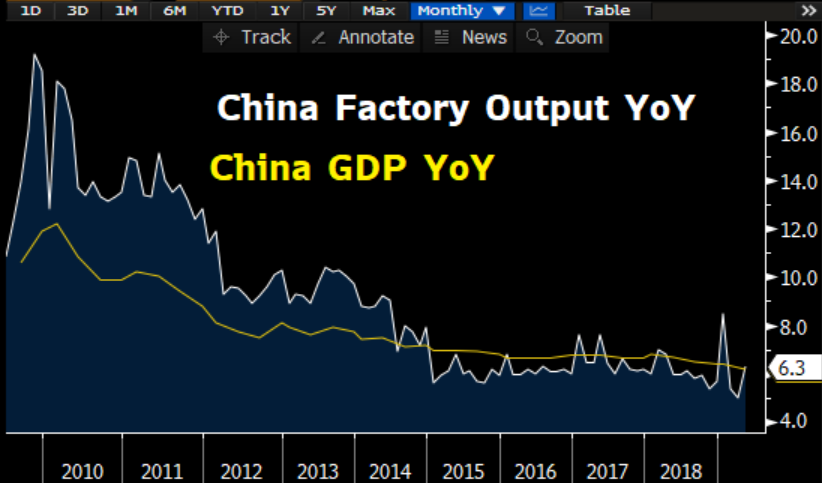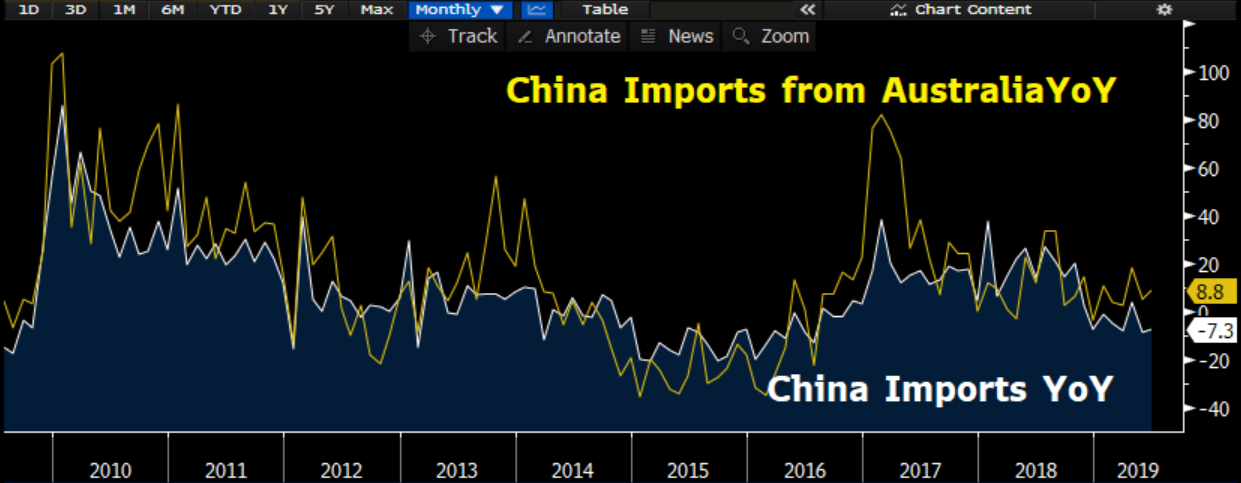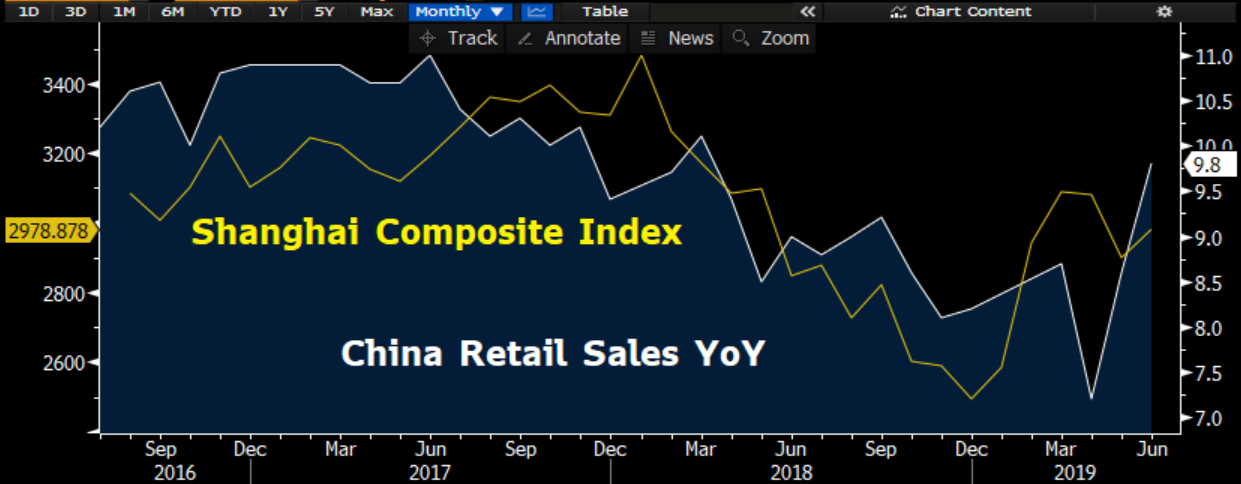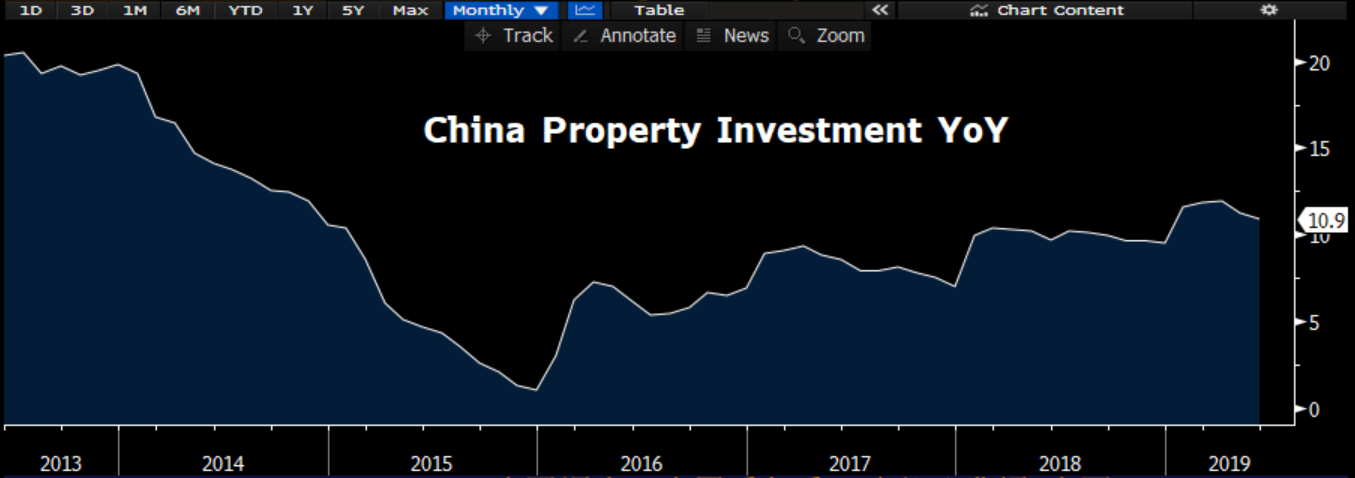
Editor's Note: Jimmy Zhu is chief strategist at Fullerton Research. The article reflects the author's opinion, and not necessarily the views of CGTN.
After China released its 2019 second quarter GDP data, expectations on authorities to increase easing measures have been rising.
However, such expectations could be disappointed later on because there are four signs shown in Monday's data that the economy is approaching the bottom in the near term, and more large-scale policy easing may not be necessary.
GDP growth in the last quarter further slowed to 6.2 percent. However, various Chinese economy-related markets showed positive moves after the data. Domestic assets such as Shanghai stocks and the Chinese yuan gained on Monday.
Besides, the Australian dollar rose sharply after the Chinese data, partially reflecting traders' increasing optimism on the Chinese economy, with the Australian economy highly reliable on Chinese demand.
Factory output
China's factory output in June rose by 6.3 percent from 5.0 percent in the previous month, accelerating by 1.3 percent in the biggest increase since March.
A sharp rebound in industrial output can be seen as an early indicator that the economy is approaching the bottom, given the correlation between GDP growth and industrial production standing at 0.96 in the past decade.

Source: Bloomberg
The uptick in industrial production is consistent with Chinese imports from Australia last month. Imports growth from Australia, a gauge of domestic industrial demand, rose to 8.8 percent from 5.2 percent in May. The quarterly correlation between industrial output and imports growth from Australia stands at 0.677 in the past decade.

Source: Bloomberg
Consumers' spending power
Retail sales in June jumped by 9.8 percent, the highest reading since March 2018. The retail surge demonstrates that confidence in the economic outlook among Chinese consumers remains robust. Despite ongoing trade tensions hurting confidence levels among some companies, as seen in earlier manufacturing PMI readings, retail sales accelerated for the second month in a row.
An ease in trade tensions after the G20 Summit may have also indirectly improved confidence among Chinese consumers. The Shanghai Composite Index gained by 2.8 percent for the month of June, boosting the wealth of many investors and potentially encouraging them to spend more.
Another key reason behind the booming retail sales is China's changing consumption habits, with more people used to shopping online. Such changes mitigate the needs for many of them to travel overseas to consume. As a result, more consumption at home will naturally increase retail sales growth.

Source: Bloomberg
Online shopping platforms provide easier access to a wider range of people in China, stimulating the domestic consumption potential. The mid-year shopping festival, also called "618" in China, saw its sales this year increase by 26.6 percent year on year, a record high that also reflects the upgrade in Chinese consumption.
Property investment
Property investment rose by 10.9 percent in the first six months of the year, a quicker pace than the 9.7 percent in the first half of 2018. The National Bureau of Statistics said urbanization is continuing to support real estate, with no major gains or declines anticipated.

Source: Bloomberg
After Monday's data release, China's 10-year government bond yield rose for the first time in three days, gaining 3 bps to 3.186. A higher bond yield reflects how bonds traders are paring their easing bets after positive signs in the latest economic data.
Even if the Fed cuts interest rates later this week, the People's Bank of China may not follow suit by lowering its market interest rates, such as the 7-day reserve repurchase rate.
The PBOC is likely to continue focusing on its existing targeted measures to support the private sector, with rising credit in June – a sign that domestic funding conditions may have improved for now.

Copyright © 2018 CGTN. Beijing ICP prepared NO.16065310-3
Copyright © 2018 CGTN. Beijing ICP prepared NO.16065310-3